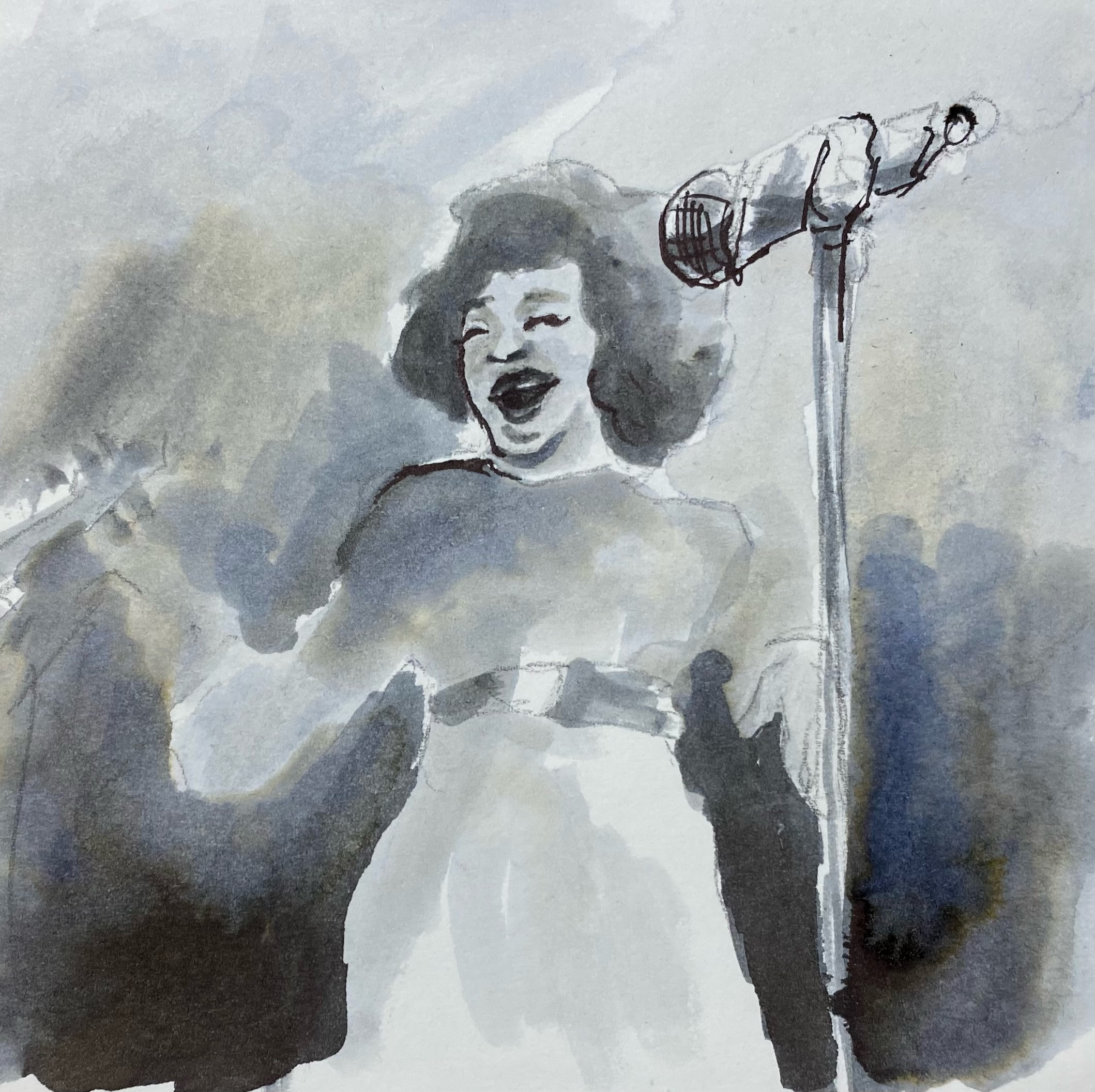Dancing and dissent: Dur-Dur band in context
February 24, 2022
 Kyra Tan
Kyra TanGliding through the noon-blue heat of the Florida interstate, my brother in the driver’s seat asks me to play a song. I’ve never heard of his request before, but trusting his judgment, I search it up on my phone and add it to the queue. The five and a half minutes that follow are something of a small revelation for me. The track in question is “Gorof (Elixir),” a swerving, summer-pulsed anthem by Dur-Dur Band, a Somali supergroup that rose to fame in the mid-1980s. As the music blares, I look out the window at the bright, syncopated sea, palm leaves strumming the sky, and I feel the urge to dance.
This is not an uncommon sensation for those who listen to Dur-Dur Band; their music makes people move. As the premiere disco group in Mogadishu, Dur-Dur Band packed every night club in the city, from Hotel Juba to Jazeera Palace, where Somali twenty-somethings could shake their hips until sunrise. With its landmark 1989 album “Volume 5” reissued in 2013, Dur-Dur Band’s music has only recently gained traction beyond its origins in the Horn of Africa. Mastered from a collection of old cassettes, the audio quality is gauzy with age, yet the youthful heart of their music remains. The aptly titled “Ilawad Cashaqa”—Somali for “move the love with me”—is a quick-footed ballad brimming with electricity, guitar licks caressing the ear like a lover’s hand. Then there is “Fagfagley,” a song with a slinking, seductive tempo which evokes the feeling of catching a stranger’s eye from across the dance floor, then sliding back into the crowd. Dur-Dur Band’s most beloved song, “Dooyo,” is a call-and-response number so enrapturing that, at the audience’s request, the band would play it up to five times in a row. In an interview with NPR, lead singer Sahra Dawo attested to the frenzied fans. “People sang and played and danced in a very crazy way to the extent that some of them would fall down to the ground,” she recalled.
Dur-Dur band’s toppling groupies seemed to presage the fate of the Somali Democratic Republic (SDR) itself, which would collapse during the Somali Civil War in 1991. Indeed, “Volume 5” is not only a remarkable music record but a complex historical record as well. The surviving tapes of the band’s early discography provide a snapshot of Mogadishu’s vibrant nightlife, an archive of Somali culture dipped in static. Performing during the later years of the SDR, the band emerged from an artistically fertile yet increasingly totalitarian political regime. In hopes of solidifying a sense of pan-Somali pride, the SDR emphasized the importance of restoring cultural roots. As a result, traditional Somali music resurfaced and began to mingle with other popular genres of the time. The outcome was a surprising confluence of different regional sensibilities: Rock and Roll meets Reer Marka; Jazz meets Jubaland; Bossa Nova meets Barawa. Many stylistic currents started to flow through the country, and Dur-Dur Band stood at the delta.
Despite this era of cultural ferment, political tensions mounted. Amid conflict with Ethiopia and internal dissent, the SDR had grown highly militaristic, culminating in the Hargeisa Holocaust, a state-sponsored effort to eliminate the Isaaq people of Northern Somalia, many of whom were fighting for independence. It was during this turbulent decade that Dur-Dur Band took to the stage. Because the SDR controlled Somalia’s national radio stations, clubs were primary sites of the country’s musical development, offering bands a chance to improvise and audiences a place of respite from the state’s purview. The uneasy, frenetic days under military rule gave way to Dur-Dur Band’s ecstatic performances at night, where the Mogadishu youth could give form to the formless intensity of the country’s political climate. The band provided a crucial space for people to articulate their restlessness, to dig into their political frustrations, where they found joy among the grit.
Even though the band dissolved in 1991 along with the SDR, there are still flickers of this joy in Dur-Dur Band’s extant recordings. When the Somali Civil War began, Dur-Dur Band’s members scattered across East Africa, and later on, the United States, but not before they could log in a few hours at the studio. The surviving records are worth listening to not only for their place in Somalia’s rich sonic ecology or their irresistible rhythmic pull, but for their passion.
When I think back to my first time listening to the band, it strikes me how little I knew about the music’s dramatic political scope. The Mogadishu shoreline thirty years ago is a far cry from the Florida Gulf Coast today, but even so, I could sense something in the music’s movement—that deep, rumbling core of joy. Whether you come to them for the history or the sound, you’ll catch a glimpse of that fervor—a feeling so forceful, it might knock you to the floor.

Comments
Before submitting a comment, please review our comment policy. Some key points from the policy: